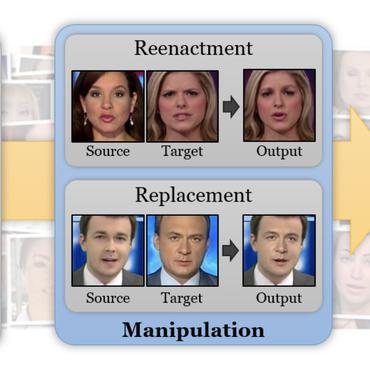Search Results for author: Youbing Yin
Found 12 papers, 3 papers with code
Synergistic Network Learning and Label Correction for Noise-robust Image Classification
no code implementations • 27 Feb 2022 • Chen Gong, Kong Bin, Eric J. Seibel, Xin Wang, Youbing Yin, Qi Song
Taking the expertise of DNNs to learn meaningful patterns before fitting noise, our framework first trains two networks over the current dataset with small loss selection.
Stochastic Planner-Actor-Critic for Unsupervised Deformable Image Registration
1 code implementation • 14 Dec 2021 • Ziwei Luo, Jing Hu, Xin Wang, Shu Hu, Bin Kong, Youbing Yin, Qi Song, Xi Wu, Siwei Lyu
We evaluate our method on several 2D and 3D medical image datasets, some of which contain large deformations.
Stochastic Actor-Executor-Critic for Image-to-Image Translation
1 code implementation • 14 Dec 2021 • Ziwei Luo, Jing Hu, Xin Wang, Siwei Lyu, Bin Kong, Youbing Yin, Qi Song, Xi Wu
Training a model-free deep reinforcement learning model to solve image-to-image translation is difficult since it involves high-dimensional continuous state and action spaces.
Imperceptible Adversarial Examples for Fake Image Detection
no code implementations • 3 Jun 2021 • Quanyu Liao, Yuezun Li, Xin Wang, Bin Kong, Bin Zhu, Siwei Lyu, Youbing Yin, Qi Song, Xi Wu
Fooling people with highly realistic fake images generated with Deepfake or GANs brings a great social disturbance to our society.
Transferable Adversarial Examples for Anchor Free Object Detection
no code implementations • 3 Jun 2021 • Quanyu Liao, Xin Wang, Bin Kong, Siwei Lyu, Bin Zhu, Youbing Yin, Qi Song, Xi Wu
Deep neural networks have been demonstrated to be vulnerable to adversarial attacks: subtle perturbation can completely change prediction result.
Fast Local Attack: Generating Local Adversarial Examples for Object Detectors
no code implementations • 27 Oct 2020 • Quanyu Liao, Xin Wang, Bin Kong, Siwei Lyu, Youbing Yin, Qi Song, Xi Wu
The deep neural network is vulnerable to adversarial examples.
Artificial Intelligence Distinguishes COVID-19 from Community Acquired Pneumonia on Chest CT
1 code implementation • Radiology 2020 • Lin Li, Lixin Qin, Zeguo Xu, Youbing Yin, Xin Wang, Bin Kong, Junjie Bai, Yi Lu, Zhenghan Fang, Qi Song, Kunlin Cao, Daliang Liu, Guisheng Wang, Qizhong Xu, Xisheng Fang, Shiqin Zhang, Juan Xia, Jun Xia
Materials and Methods In this retrospective and multi-center study, a deep learning model, COVID-19 detection neural network (COVNet), was developed to extract visual features from volumetric chest CT exams for the detection of COVID-19.
Category-wise Attack: Transferable Adversarial Examples for Anchor Free Object Detection
no code implementations • 10 Feb 2020 • Quanyu Liao, Xin Wang, Bin Kong, Siwei Lyu, Youbing Yin, Qi Song, Xi Wu
Deep neural networks have been demonstrated to be vulnerable to adversarial attacks: subtle perturbations can completely change the classification results.
Domain Embedded Multi-model Generative Adversarial Networks for Image-based Face Inpainting
no code implementations • 5 Feb 2020 • Xian Zhang, Xin Wang, Bin Kong, Youbing Yin, Qi Song, Siwei Lyu, Jiancheng Lv, Canghong Shi, Xiaojie Li
We firstly represent only face regions using the latent variable as the domain knowledge and combine it with the non-face parts textures to generate high-quality face images with plausible contents.
DeepCenterline: a Multi-task Fully Convolutional Network for Centerline Extraction
no code implementations • 25 Mar 2019 • Zhihui Guo, Junjie Bai, Yi Lu, Xin Wang, Kunlin Cao, Qi Song, Milan Sonka, Youbing Yin
The proposed method generates well-positioned centerlines, exhibiting lower number of missing branches and is more robust in the presence of minor imperfections of the object segmentation mask.
Attention-driven Tree-structured Convolutional LSTM for High Dimensional Data Understanding
no code implementations • 29 Jan 2019 • Bin Kong, Xin Wang, Junjie Bai, Yi Lu, Feng Gao, Kunlin Cao, Qi Song, Shaoting Zhang, Siwei Lyu, Youbing Yin
In order to address these limitations, we present tree-structured ConvLSTM models for tree-structured image analysis tasks which can be trained end-to-end.
Residual Attention based Network for Hand Bone Age Assessment
no code implementations • 21 Dec 2018 • Eric Wu, Bin Kong, Xin Wang, Junjie Bai, Yi Lu, Feng Gao, Shaoting Zhang, Kunlin Cao, Qi Song, Siwei Lyu, Youbing Yin
The hierarchical attention components of the residual attention subnet force our network to focus on the key components of the X-ray images and generate the final predictions as well as the associated visual supports, which is similar to the assessment procedure of clinicians.







